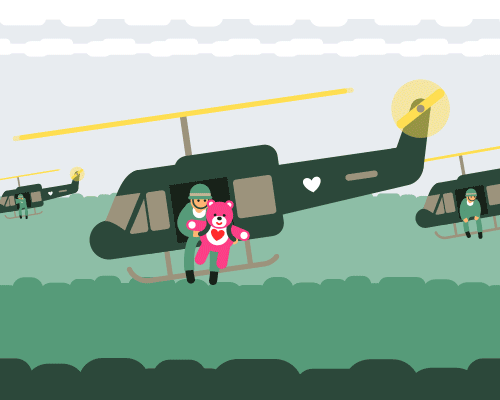

Welcome to part three of this brief journey through the rich history of one of the newest and most popular art forms, the animated GIF. The previous installments are “The Early Years: 1997–2008” and “Group Blogs, Surf Clubs, and the Beginning of Social Networking.”
Let’s face it, after about 2009 GIF production accelerated at such a rate that any attempt to identify key artists would not only be futile, but create a post so long no one would read it. As such, for this section I’ve decided to focus solely on Tumblr, whose role is significant enough in the development and dissemination of GIF art to earn a post of its own.

David Szakaly.
Courtesy the artist, via Tumblr.
THE RISE OF TUMBLR
Tumblr’s rise has been remarkable from the get-go. Within two weeks of its launch in 2007, it reached 75,000 users. In July 2009 alone, the site reported having 255 million pages views. One year later, in July 2010, the site had 1.5 billion users. It was around this time that the GIF explosion on the platform became very visible—although it wasn’t until 2012 that Oxford Dictionaries named GIF “The Word of the Year.”
So why is the platform so GIF-friendly? In 2010, it wasn’t. The file size limitation for an animated GIF was 1 megabyte, which, in the world of GIFs, is very, very small. As a result, we saw the rise of Tumblrs such as Three Frames (now defunct), whose name referred to the number of frames used in the GIFs it featured, which were all drawn from movies. The fewer the frames, the smaller the file size.
The rise of GIFs on Tumblr may simply be attributed to the social networking built into the site. The dashboard allows easy reblogging, tagging, and uploading of new images. Building networks of bloggers with common interests happens easily through liking and reblogging. In other words, Tumblr was a more streamlined way of sharing images and meeting new artists than its surf blog predecessors. And now that the site allows a larger file size (2 megabytes), we’ll be seeing more visually-complex GIFs. (There’s already detailed technical writing on how to create great GIFs within the current parameters, for those especially eager to start sharing.)
A Tumblr-based art world, generally speaking, is defined a little more broadly than the art world defines itself. The dashboard removes context the way a Google image search does, so that may have something do with its democratic nature. Articles and lists about artists on Tumblr typically include artists with little to no connection to the art world—mathematicians, animators, computer programmers, etc—as well as artists who work the gallery and museum circuit.
Given the sheer volume of animated GIF art that appears on Tumblr, I’ve culled a few images in an attempt to give a general overview of the art-making on that platform. Broadly speaking, those without a fine art background tend to gravitate toward smooth animation loops, illusionistic movement, spinning circular forms, op art, and sci-fi iconography. By contrast, artists tend to gravitate towards a “more is more” aesthetic, cramming as much visual information into each GIF as possible.
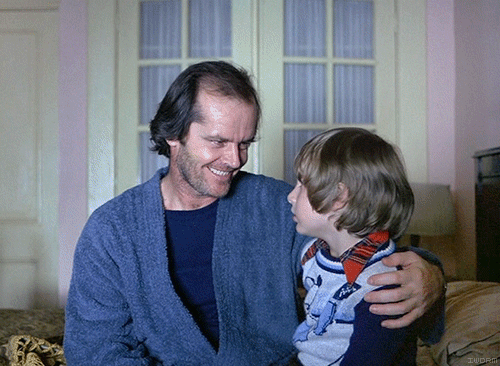
A GIF from Three Frames.
Three Frames and Cinemagraphs, 2008–present
The Three Frames Tumblr (now defunct) probably has more significance to the development of a broader online GIF culture than it does to GIF art specifically. According to Know Your Meme, as early as April 30, 2009, the blog was using stereographic techniques to make images appear three-dimensional. That led to the above cinemagraph—the technique of animating only a small portion of an image—first posted on If We Don’t Remember Me. The technique “cinemagraph” and the technique it describes, coined by photographer Jamie Beck and her partner Kevin Burg in 2011, has been lauded by the mainstream press for “changing fashion photography.” But Critics of the technique, including yours truly, have derided the work as little more than a tool to promote the duo’s cheeseball fashion photography.
Related Tumblrs: Ann Street Studio, #threeframes (a now popular tag on Tumblr indicating an image stack or GIF cycle), Hell Yeah Cinemagraphs.
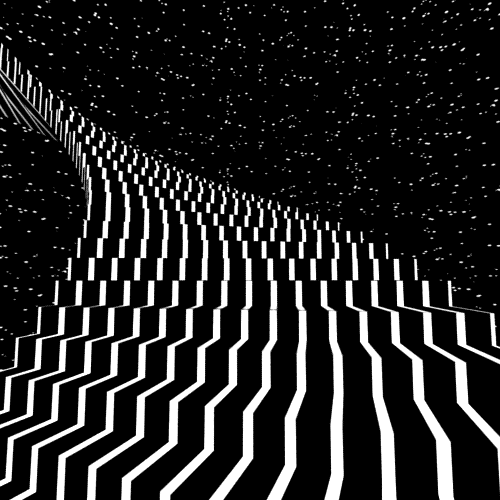
GIF art by David Szakaly.
David Szakaly, DVDP, 2008–present
Thanks to his spinning and rippling 3-D Op art images, David Szakaly may be the most well-known Tumblr artist on the web—he’s even got his own Know Your Meme page. Launched in 2008, Szakaly’s page initially did little more than post still images in its first six months. Like many artists, it was only after realizing that Tumblr users rarely clicked on videos that Szakaly began to make GIFs. Although these images are complex, their predominantly black-and-white color scheme helps keep the file size low enough to meet Tumblr’s uploading requirements. Typically, Szakaly posts a single GIF at a time, as opposed to a full series of images per post.
Related Tumblrs: Mr. Div, Hexeosis, Echophon, Zwian, Bees and Bombs, Adam Ferriss.

Slim Jim Studios, Care Package.
James Curran, Slim Jim Studios, April 2013–present
James Curran runs the animation studio Slim Jim Studios, and maintains the company’s Tumblr. The blog is a good way to get business, and the GIFs offer a quick look at the practice. Typical posts include a self-electrocuting puppy, a Sisyphean image of frogs forever swimming toward the top of the frame, or a child continuously bursting her gum bubble. Many of Curran’s GIFs work because they build anticipation for the loop’s completion. As with DVDP, these images are not made with the fine art world in mind.
Related Tumblrs: Cindy Suen, Hoppip, Michael Shillingburg, Centolodigiani (Cento Lodigiani), Brent’s GIFs (Brent Clouse).
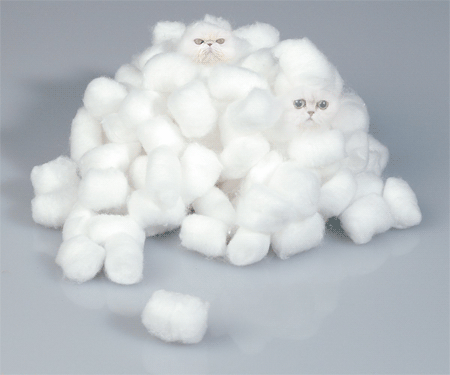
GIF by Steph Davidson.
Steph Davidson, Rising Tensions, 2009–present
The Internet dates the youngest of us. Though 2009 was only five years ago, that’s already long enough ago to qualify artists as veterans. Of those veterans, there may not be a more successful user than Steph Davidson of Rising Tensions. Her style continues to have all the hallmarks of that time. She typically posts gently-manipulated found imagery—like this pile of cotton balls, softly overlaid with transparent cat faces—and doesn’t stack images in a single post. Default software influenced the look and feel of many blogs like Davidson’s, and we started seeing more stacked images after Tumblr introduced the gallery function in 2012. Davidson describes her work in fine art terms. She was curated into my own show, Graphics Interchange Format, at Denison University in 2011.
Related Tumblrs: Lolumad, Two Hundred and Fifty Six Colors (Eric Fleischauer and Jason Lazarus), Joe Hamilton, Francoise L’Iroquoise, Kim Asendorf, Scorpion Dagger.
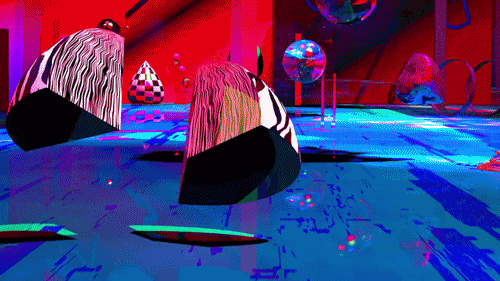
GIF by Eva Papamargariti.
Eva Papamargariti, 2010-present
Eva Papamargariti started out on Tumblr posting photographs in a restrained color palette, many of them depicting wires, antennae, and cityscapes. But as her Tumblr blog evolved, her sleek 3-D rendered GIFs became more prevalent. This work is distinct from Davidson’s, which relies more heavily on found imagery, and a lo-fi aesthetic. She, too, exhibits her GIF work regularly around the world.
Related Tumblrs: Vince Mckelvie, Wolf and Unicorn (Andrew Benson), LaTurbo Avedon.

Rick Silva, Compass on Cloaque.org.
Claudia Maté, Carlos Saez, and contributing artists, Cloaque.org, 2012
A site with a greater reverence for digital software may not exist. Claudia Maté and Carlos Saez use virtually all of the tools in their digital arsenal to stitch together a mix of 3-D renderings (women, bling, and abstract digital renderings of landscapes) and Internet detritus made by invited artists into one continuously-updated scroll, an exquisite corpse of epic proportion—which Art F City once printed out.
Related tumblrs: 15 Folds.
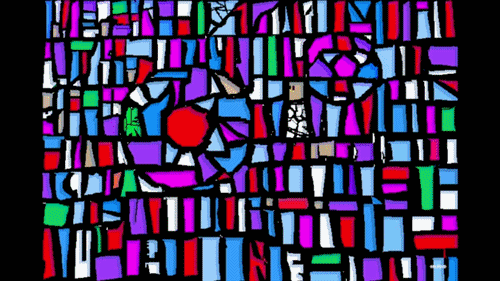
Artwork by Hal Lasko, a retired graphic designer spent his days making art on MS Paint. He died June 6, 2014, at the age of 98. His tumblr was hallasko, The Pixel Painter.
Via ProstheticKnowledge.
Rich Oglesby, Prosthetic Knowledge, 2009–present
Rich Oglesby doesn’t identify as an artist, but since any list of GIF makers would be incomplete without the aggregators and researchers, we’re including him. Many of the GIFs that appear on his site he’s made himself, often to illustrate the subject of his posts.
Related Tumblrs: CPB (Camille Paloque-Berges, 2009-2011), GIF Selections.
Read part one and part two of Paddy Johnson’s brief history of animated GIF art.
Follow Artnet News on Facebook:
Want to stay ahead of the art world? Subscribe to our newsletter to get the breaking news, eye-opening interviews, and incisive critical takes that drive the conversation forward.





